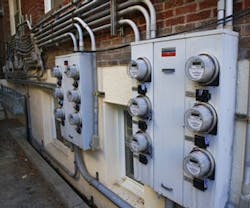2012’s Top Five Buildings Trends
With commercial and residential buildings already using the lion’s share of the world’s energy use, creating smarter buildings that use resources more efficiently is an urgent stepping stone to more sustainable communities, says Dave Bartlett, vice president of IBM’s Smarter Buildings Initiative.
Five top trends are likely to emerge this year as the smarter buildings market continues to evolve, according to Bartlett:
- Smart neighborhoods. Buildings will begin to adopt smart grid technology in groups, allowing the proliferation of smart neighborhoods that can monitor, analyze, and minimize group-wide power consumption and emissions.
- X-ray vision. Occupants of smarter buildings will gain new visibility into the functions of their space, including resource consumption. Instead of viewing past utility bills to examine usage, building owners and managers can use metering that allows real-time monitoring to analyze data and optimize performance.
“Today, most people only get their bills at the end of the month, but with advanced metering and monitoring, we can get a view into actual usage,” Bartlett explains.
“This greater transparency can be used to drive analytics that identify patterns. We can better adjust how we do maintenance, use energy, and determine when things need to be replaced.” - Beyond parking. Mobile apps will allow people to act as “living sensors” to provide feedback on cities and buildings, Bartlett predicts.
Building on the success of apps like Streetline, which helps drivers find available parking spots, apps currently under development will allow passersby to alert cities to potholes, graffiti, and other urban issues by snapping photos with their smartphones and sending them to city management. - The energy café. Building managers will have more opportunities to choose how they purchase energy, prioritizing source and cost, Bartlett says. This will lay the groundwork for fluid energy sourcing in the future. “If an organization has carbon footprint targets to meet, they might decide to source 30% of their energy from renewable sources like solar and wind,” Bartlett explains. “If the cost rises too much, they could shift to natural gas.”
- Real estate management becomes a science. Finance and real estate professionals will begin to evolve into a smarter buildings team, Bartlett says. Accounting rule changes due in spring will require greater transparency for publicly traded companies, which will have to divulge all real property assets.
“As organizations itemize their assets, they’re also looking into ways to reduce costs. By listening to how their buildings are wasting energy, they’re finding new ways to not only cut costs, but to reduce their carbon footprint,” Bartlett says. “It’s about being accountable for what you’re spending.”
